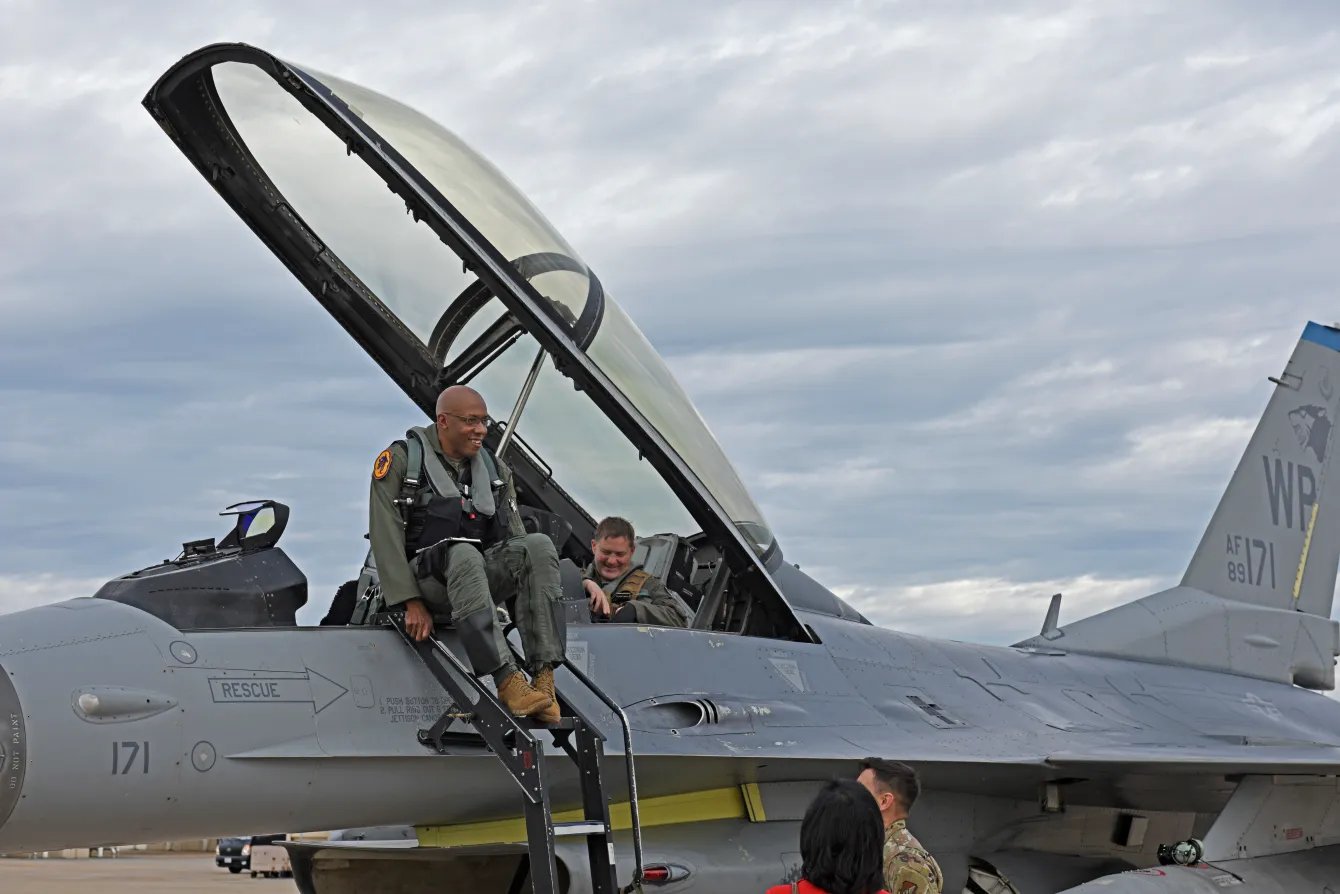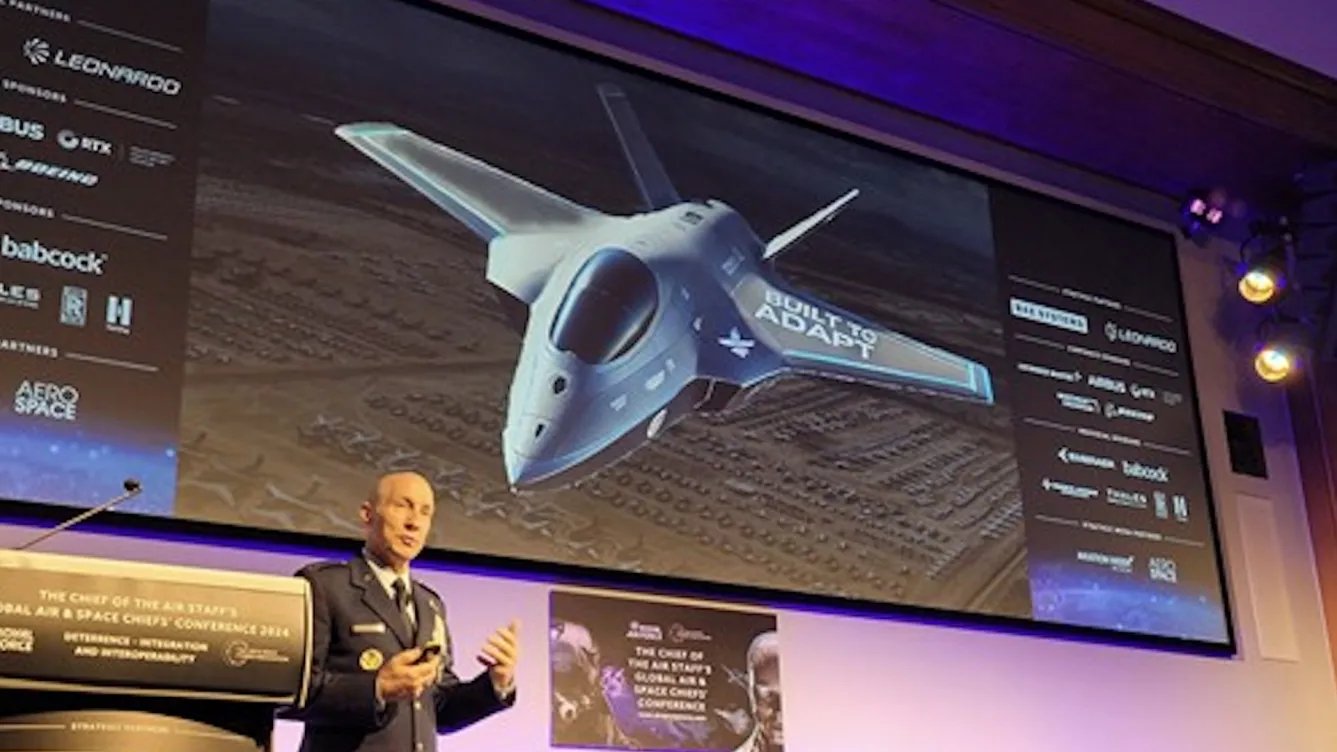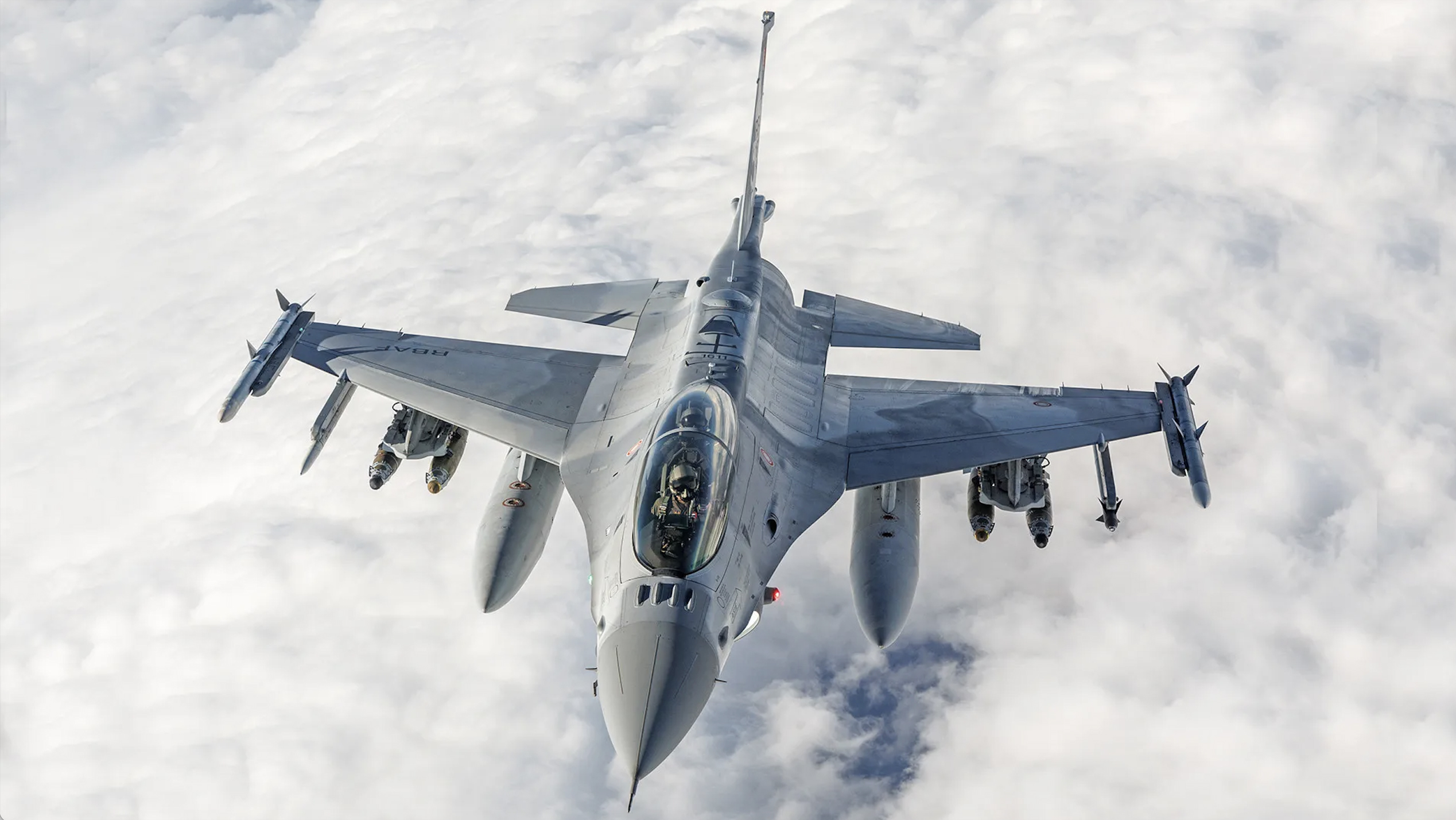Chief of Staff of the Air Force Gen. David Allvin today responded to questioning regarding the potential of a new version of the prolific F-16, a so-called Block 80, as a way of increasing the combat mass of the service in the future. While the Air Force doesn’t at this point have a plan to start buying Vipers again, it’s certainly interesting that the topic is up for discussion, especially with the service looking hard at how it will balance its next-generation fighter requirements, while introducing the F-47 crewed stealth fighter and Collaborative Combat Aircraft (CCA) drones. At the same time, it continues to buy the F-35A stealth fighter and the F-15EX.
Alongside Secretary of the Air Force Troy Meink and Chief of Space Operations Gen. Chance Saltzman, Allvin was testifying before the Senate Committee on Armed Services. Sen. Thomas Cotton, chairman of the Senate Republican Conference and chair of the Senate Intelligence Committee, asked Allvin about the potential need to buy new aircraft to replace the Air Force’s oldest fighters, some of which will still be flying into the 2040s.

“Focusing on just the next decade, then, our current acquisition options are pretty limited,” Cotton said, before asking Allvin: “Would you be able to use newly built U.S.-configured Block 80 F-16s to strengthen our strike fighter fleet, if Congress can find additional funds for such an effort?”
“Looking at what that would be to take that export variant and adapt it to a Block 80, and the time it would take, and where that would fall in the production line, I’d have to get back with you with more details to see if that would be an advisable situation,” Allvin responded.
“I’d really have to look at what the defense industrial base can do on that,” Allvin added, “because my sense is that the current Block 70 is really eating up a lot of production lines and production capacity and all the FMS [Foreign Military Sales].”

At this point, it’s worth noting that it’s unclear whether the Block 80 exists as a concept for the Air Force or whether the designation was being used in the hearing in a purely speculative way. TWZ has reached out to Lockheed Martin for more details.
Obviously, however, Allvin was happy to consider the idea of a new version of the F-16 for the service, even if only on a hypothetical level.
Undoubtedly, the in-production Block 70/72 F-16C/D aircraft are already highly capable, featuring sophisticated avionics, mission systems, active electronically scanned array radar and a digital electronic warfare suite.
The supposed Block 80, however, would presumably be more capable still, as well as being adapted for the specific needs of the Air Force.
Aside from the Block 80, Cotton also asked if the Air Force would potentially have a place for the Block 70 (and the related Block 72), currently being built by Lockheed Martin in Greenville, South Carolina, for export customers.
Again, Allvin said he would take the question for the record and come back with a fuller response. In particular, he said he would have to look in more detail at “what the export variant can and can’t do, and any sort of adjustments we would have to make to make it more easily integrable with our U.S.-built fighters. I would need to see what the integration opportunities and costs would be before I can give you a good answer.”
Whether Block 80, or Block 70/72, there remains a big question over whether an Air Force order for these jets would be feasible, given the limited production capacity at the Greenville plant, as you can read more about here.
Interestingly, the possibility of the Air Force buying new-production Block 70/72 aircraft to bolster its tactical aviation fleets in the near term has come up in the past.
Back in 2021, outgoing Assistant Secretary of the Air Force for Acquisition, Technology, and Logistics Will Roper suggested the service might want to order an advanced version of the F-16, such as the Block 70/72.

“As you look at the new F-16 production line in South Carolina, that system has some wonderful upgraded capabilities that are worth thinking about as part of our capacity solution,” Roper said, in an interview with Aviation Week.
The idea was quickly shot down by then-Air Force Chief of Staff Gen. Charles Q. Brown Jr., who was vehement that the F-16 — even a much-improved version — was not the right choice for the future Air Force. In particular, he pointed to the F-16’s inability to receive software updates at the speed that’s desired and its lack of open-architecture software protocols that would allow it to be rapidly reconfigured.
At the same time, Brown did, however, bring up the possibility of a “clean-sheet design” for a future fighter, which he described as a “four-and-a-half-gen or fifth-gen-minus” aircraft. This would be cheap enough to be procured in the numbers required to eventually replace the F-16.

But perhaps, after all, the idea of a potential future Air Force F-16 buy is not altogether dead.
Speaking today, Allvin stressed the importance of having “not only the right capacity but the capability … to make sure that we have the right mix of the high-end to be able to dominate and be relevant in an Indo-Pacific fight, as well as other fighters that may not need to be as sophisticated as our fifth-generation, sixth-generation.”
Furthermore, Allvin said that CCA drones — at least as far as Increment One is concerned — will not be able to replace crewed fighters like the F-16 and the F-15E.
“My assessment [of the CCA] as of right now, it will not replace that. It will be a great augmentation. And its threshold is to be able to work with the F-35 and the F-22 even before the F-47 gets fielded, so it will help us deliver more combat capability at a better cost point. But as far as replacing the manned fighters, that remains to be seen. What we have built into Increment One, my assessment right now is that would not be a good one-for-one replacement.”
Meanwhile, the need to replace aging F-16s, which still serve as a backbone of the USAF’s fighter fleet, is becoming more acute, Allvin noted.
“As we continue to keep the older aircraft, they do become more and more expensive to maintain,” Allvin said, while the mission capable rate “is not what we’d like it to be.” He added that the average Air Force F-16 “was built right about the time the Cold War ended. So even those F-16s are getting pretty old.”
As of 2024, the mission capable rate (MCR) for the F-16C stood at 64 percent, down from almost 72 percent in 2021. This compares with 52 percent for the F-22, and 86 percent for the brand-new F-15EX.

The designated replacement for the F-16 should be the F-35 stealth fighter, although there have long been signs that the Air Force doesn’t see this platform as necessarily the direct successor to all its legacy tactical fighters.
The Air Force F-35A buy is still officially pegged at 1,763 aircraft, but there have been reports that, as early as 2018, the service had prepared a study that called for these orders to be cut back to 1,050.
The Air Force is, notably, also buying F-15EX fighters, alongside F-35As, so clearly it hasn’t entirely given up on acquiring fourth-generation fighters.
In the past, Allvin has also raised the possibility of some kind of light crewed fighter that could serve as a future adjunct to more advanced and costly fifth- and sixth-generation fighters. Allvin presented a highly notional concept illustration for a light fighter last year, as you can read about here.

Despite the Air Force’s commitment to the F-35, the Joint Strike Fighter program remains an enormously expensive one — the costliest in Pentagon history — leaving room for discussions, at least, about a cheaper crewed fighter. With advanced versions of the F-16 now being manufactured for export customers, it’s perhaps no surprise that the Viper, or a further optimized iteration of it, is being at least discussed by some as potential equipment for the U.S. Air Force, too.
Contact the author: thomas@thewarzone.com
